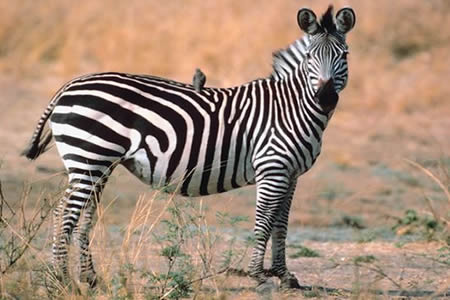The confusion hypothesis

The confusion hypothesis states that the stripes confuse predators, be it by: making it harder to distinguish individuals in a group as well as determining the number of zebras in a group; making it difficult to determine an individual’s outline when th
e group flees; reducing a predator’s ability to follow a target during a chase; dazzling an assailant so they have difficulty making contact; or making it difficult for a predator to judge the zebra’s size, speed and trajectory via motion dazzle. This theory has b
een proposed by several biologists since at least the 1970s.[58] A 2014 computer study of zebra stripes found that the motion signals made by zebra stripes give out misleading information and can cause confusion via the wagon-wheel effect or barber pole illusion. The resea
rchers concluded that this could be used against mammalian predators or biting flies.[59] The use of the stripes for confusing against mammalian predators has been questioned. The stripes of zebras could make group size look smaller, and thus more attractive to predat
ors. Zebras also tend to scatter when fleeing from attackers and thus the stripes could not obscure an individual’s outline. Lions, in particular, appear to have no difficulty targeting and making contact with zebras when they get close and take them by amb
ush.[60] In addition, no correlations have been found between the amount of stripes and populations of mammal predators.[56]
